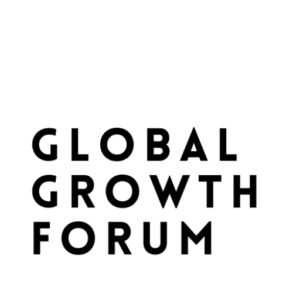As global markets continue to navigate a complex and fluctuating economic environment, the current forecast for many sectors indicates “cloudy with a chance of price falls.” This metaphorical weather report reflects growing concerns about potential declines in prices across various industries and asset classes. This article delves into the factors contributing to this forecast, explores its implications for different sectors, and provides insights into how businesses and investors can prepare for a potentially turbulent period.
Factors Contributing to the Forecast
Several key factors are driving the expectation of price declines, including:
- Economic Uncertainty: Economic uncertainty remains a significant factor influencing market dynamics. Ongoing geopolitical tensions, trade disputes, and shifting monetary policies have created a volatile environment. Investors and businesses are grappling with the implications of these uncertainties on future economic growth and stability.
- Inflationary Pressures: Persistent inflationary pressures have been a major concern for economies worldwide. Rising consumer prices, driven by factors such as supply chain disruptions, increased energy costs, and wage inflation, have led to concerns about the impact on purchasing power and economic growth. In response, central banks have been adjusting monetary policies, including interest rate hikes, which could affect asset prices.
- Supply Chain Disruptions: The global supply chain has faced significant disruptions due to the COVID-19 pandemic, natural disasters, and geopolitical conflicts. These disruptions have led to shortages and increased costs for raw materials and finished goods. As supply chains attempt to recover, price volatility and potential declines are expected as markets adjust to new realities.
- Technological Advancements: Rapid technological advancements and innovations are reshaping various industries. While technology can drive efficiency and growth, it can also lead to market disruptions. For instance, advancements in automation and artificial intelligence may reduce operational costs but could also contribute to price fluctuations as industries adapt to new technologies.
- Shifts in Consumer Behavior: Changes in consumer behavior, driven by evolving preferences and economic pressures, are impacting demand for various products and services. For example, the growing emphasis on sustainability and eco-friendly products may influence pricing dynamics in sectors such as consumer goods and energy.
Implications for Different Sectors
The forecast of cloudy skies with a chance of price falls has varying implications for different sectors:
- Retail and Consumer Goods: In the retail and consumer goods sector, price falls may result from shifting consumer preferences and increased competition. As consumers become more price-conscious and demand more value, retailers may face pressure to adjust pricing strategies. Additionally, supply chain disruptions and changes in consumer spending patterns could further influence pricing dynamics.
- Real Estate: The real estate sector may experience fluctuations in property prices due to changing economic conditions and interest rate adjustments. Rising interest rates can increase borrowing costs, potentially impacting housing affordability and slowing down price growth. However, localized factors, such as supply and demand imbalances, may continue to influence real estate prices in specific regions.
- Energy: The energy sector is highly sensitive to fluctuations in commodity prices and geopolitical events. Price falls in energy markets may occur due to changes in global demand, technological advancements in renewable energy, and shifts in production levels. As economies transition toward cleaner energy sources, traditional energy sectors may face price volatility and adjustments.
- Technology: The technology sector is characterized by rapid innovation and evolving market trends. While technological advancements can drive growth, they can also lead to price fluctuations as companies adapt to new technologies and competitive pressures. Investors and businesses in the tech sector need to navigate these changes to capitalize on opportunities and mitigate risks.
- Commodities: Commodities such as metals, agricultural products, and oil are subject to global supply and demand dynamics. Price falls in commodities can result from changes in production levels, shifts in consumer demand, and geopolitical developments. Market participants in the commodities sector need to monitor these factors closely to manage price risks effectively.
Preparing for Price Falls
Businesses and investors can take several steps to prepare for potential price falls and navigate a turbulent economic environment:
- Diversification: Diversifying investments and revenue streams can help mitigate risks associated with price fluctuations. By spreading investments across different asset classes and sectors, businesses and investors can reduce exposure to adverse price movements in any single area.
- Cost Management: Implementing effective cost management strategies can help businesses maintain profitability during periods of price declines. This includes optimizing operational efficiency, renegotiating supplier contracts, and exploring cost-saving measures.
- Market Research: Conducting thorough market research and staying informed about industry trends and economic indicators can provide valuable insights for decision-making. Understanding the factors driving price changes and consumer behavior can help businesses and investors make informed choices.
- Risk Management: Developing a robust risk management strategy is essential for navigating price volatility. This includes using financial instruments such as hedging to manage exposure to commodity prices, interest rates, and foreign exchange fluctuations.
- Adaptation and Innovation: Embracing innovation and adapting to changing market conditions can position businesses for success in a dynamic environment. Investing in new technologies, exploring alternative business models, and staying agile can help businesses remain competitive and resilient.
Disclaimer: The thoughts and opinions stated in this article are solely those of the author and do not necessarily reflect the views or positions of any entities represented and we recommend referring to more recent and reliable sources for up-to-date information.



